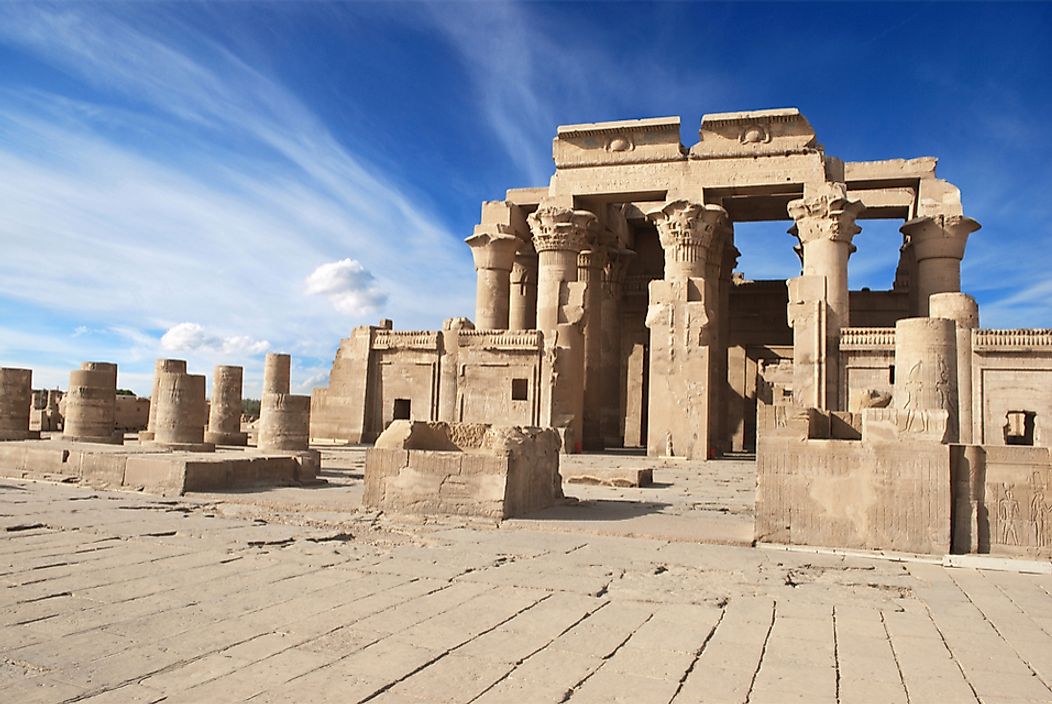What Is Unique About the Temple of Kom Ombo in Egypt?

Where Is the Temple of Kom Ombo Located?
The Temple of Kom Ombo is an ancient Egyptian temple located along the Nile river in Kom Ombo, a town in Upper Egypt’s Aswan Governorate.
Who Built the Temple of Kom Ombo?
Ptolemy VI Philometor, the Egyptian king who reigned during the Ptolemaic period from 186 BC to 145 BC, began construction of the temple near the beginning of his rule. Future kings of the dynasty expanded the temple and added new features. Ptolemy XIII, who ruled between 51 BC and 47 BC, also made significant contributions to the temple and is credited with the completion of the hypostyle (a roof supported by columns) halls. Later, during the Roman period, a few additional features were added to the temple.
Religious Significance of the Temple of Kom Ombo
The temple is unusual in that it is dedicated to two principal deities who were worshipped in two halves of the temple building. The main deity of the northern half of the temple is Horus, the ancient Egyptian god of the sky, hunting, and war. Horus is depicted in many forms but usually as a man with a falcon head. He was worshipped along with Hathor, the goddess of motherhood and joy, and Khonsu, the god of the moon.
The southern part of the Temple of Kom Ombo is dedicated to Sobek, the ancient Egyptian god of fertility. Often represented as a man with a crocodile head, Sobek is also regarded as the creator of the world. Here, Sobek was worshipped with Panebtawy, who is referred to as the Lord of the Two Lands, and goddess Tasenetnofret.
Unique Architecture of the Temple of Nom Ombo
The temple exhibits a unique design in that it is divided into two perfectly symmetrical halves, each which is dedicated to a set of gods. In each of these halves, the interior structures, like halls and sanctuaries, are also duplicated. Twin entrances lead to two connected hypostyle halls, which lead to further antechambers ending in the two sanctuaries. It is believed that the current temple replaced an older temple in the site, since reused blocks have been discovered in the structure of the temple. Reliefs decorate the front facade of the temple and walls in the interior, which represent royal, mythological, and religious events, and aspects of the life of the ancient Egyptians.
Things to See and Do at the Temple of Kom Ombo
The temple is a popular tourist attraction for anyone interested in learning about the history of ancient Egypt. The temple is also an aesthetically beautiful structure. Tourists can explore the entire temple, take photographs, and tour guides explain the meaning of the reliefs on the walls of the temple which represent scenes like the coronation of the Egyptian king, legends and mythological stories and more. Of particular interest is a scene on the temple’s rear wall, which is believed to represent a set of surgical instruments used in ancient times. It is possible that these instruments were used by ancient physicians for treating patients. However, on the contrary, the scene could also represent instruments used in the daily rituals of the temple.
Visitors to the temple can also observe a non-operational nilometer, a structure used by the ancient Egyptians to measure the water level of the river in order to predict floods. The nilometer at the Temple of Kom Ombo features a channel leading from the riverbank to a well. However, water now no longer reaches the well, which exists as a deep, cylindrical structure near the entrance to the temple area.
Outside of the temple complex there exists a Crocodile Museum that houses mummified crocodiles from ancient times and other historical artifacts of ancient Egypt.
Threats to the Temple of Kom Ombo
Since the temple is situated on a promontory at the banks of the Nile, water erosion has degraded parts of the outer sections of the temple complex. However, it is currently well-preserved due to its high archeological value.











